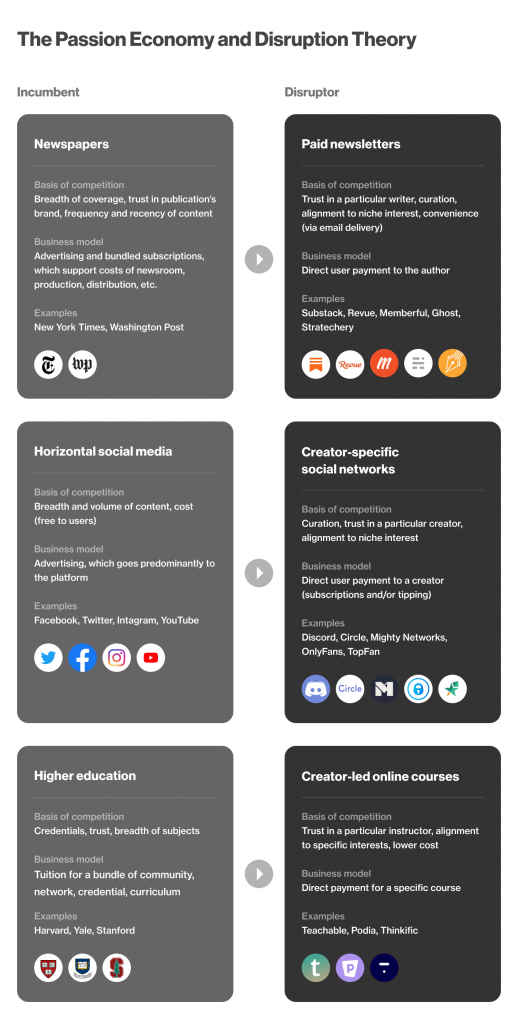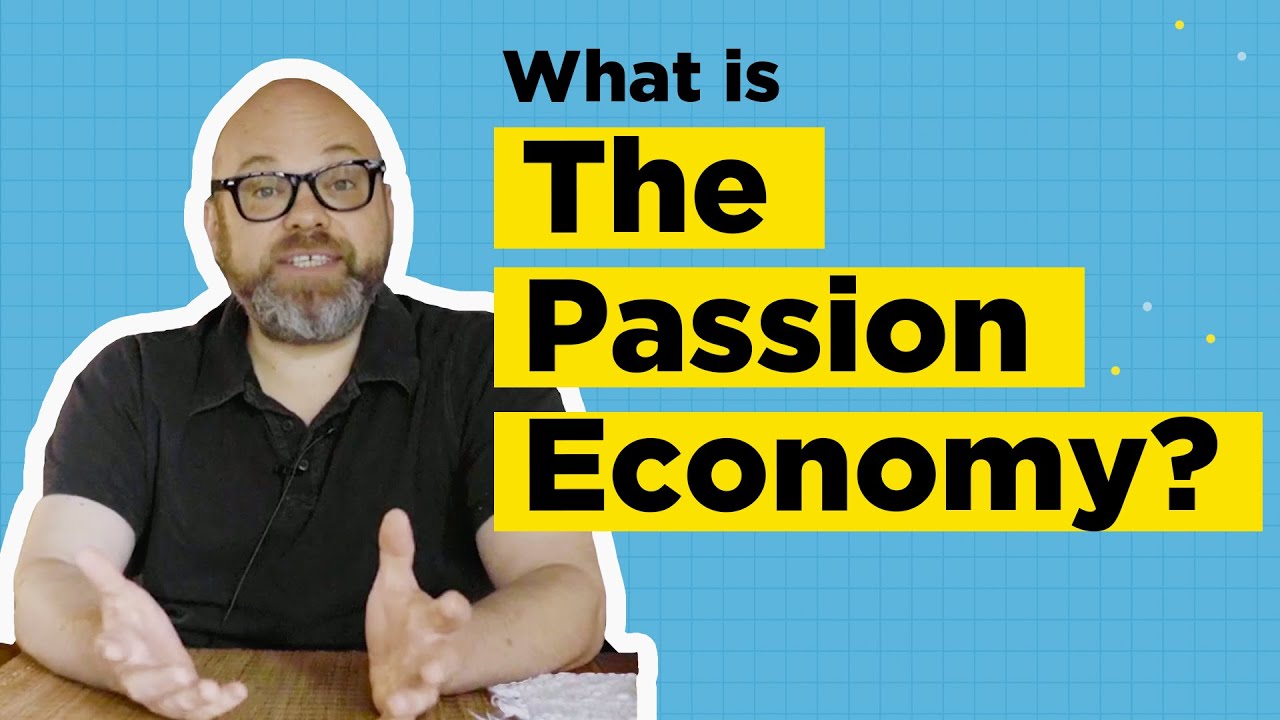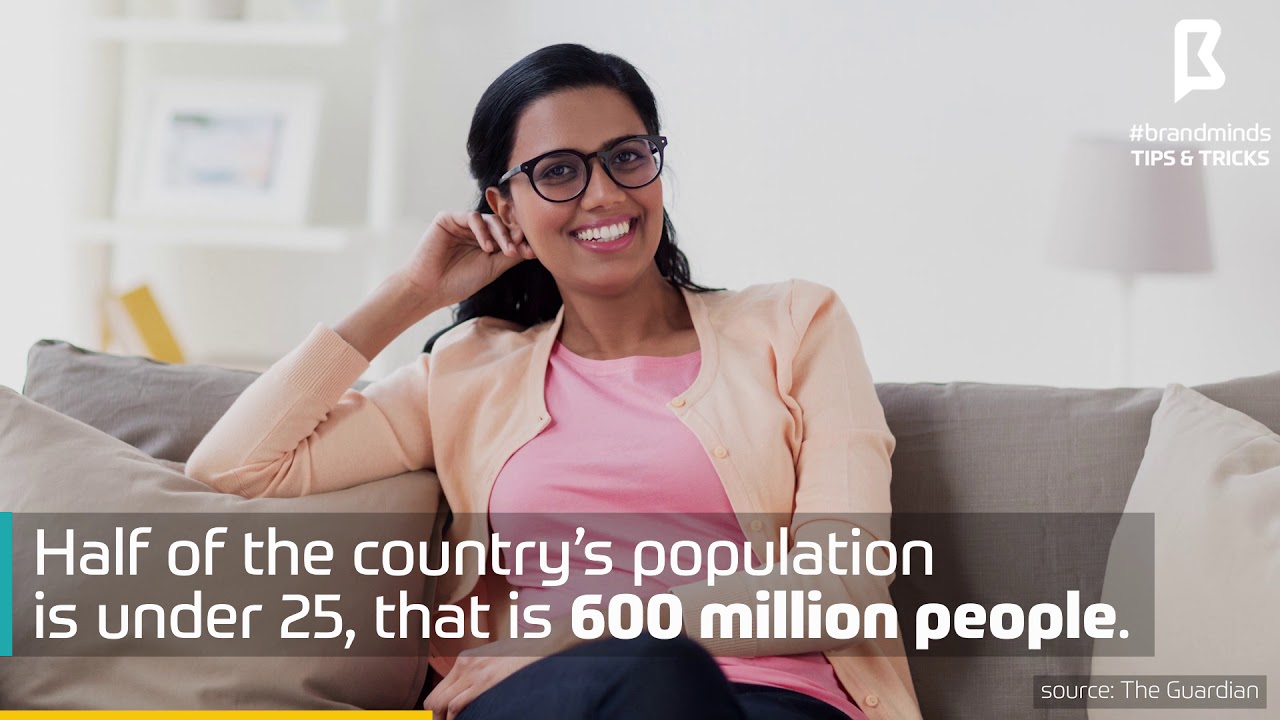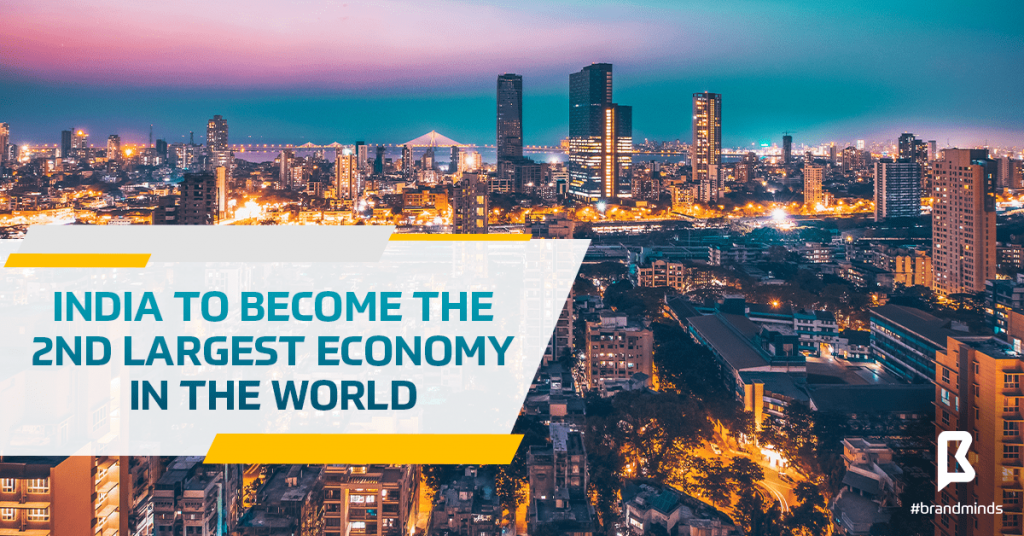4 technologies every business should use to achieve their goals effectively in 2021
What are 4 technologies every business should use to achieve their goals more effectively in 2021?
1. Digital Automation
What is automation? Automation is the elimination of all manual labour through the use of automatic controls that ensure accuracy and quality.
The term automation was first coined in the 1940s at the Ford Motor Company and was applied to the automatic handling of parts in metalworking processes.
The industrial revolution leveraged the power of machines to produce goods at scale. The digital revolution began in the late 1970s and ushered in a new way to manage business processes.
The benefits of automating business processes are many, ranging from efficiency boost, reduced costs to increased productivity.
Automation in business means using technology to replace manual effort and repetitive tasks allowing employees to tackle creative tasks or other projects where they can add real value.
In October 2020, leading Robotic Process Automation software (or RPA) UiPath’s survey on automation skills found that 70% of senior executives want non-technical employees to have automation and AI skills.
Here are 6 examples of business automation tools:
- ServiceNow is a cloud-based workflow automation platform that enables enterprise organizations to improve operational efficiencies by streamlining and automating routine work tasks;
- ActiveCampaign is a marketing automation platform, combining advanced email marketing features and an enterprise standard CRM;
- Hootsuite automates your social media marketing;
- Grammarly automates proofreading and spell-checking;
- Agile CRM automates workflows across sales channels;
- Zoho Recruit helps HR managers source, track, and hire the best candidates;
The global marketing automation market size alone was valued at USD 4.06 billion in 2019 and is expected to grow with 9.8% from 2020 to 2027 (source).
Is your business automating its processes? How much of your employees’ tasks are automated to reduce time, cut costs and increase productivity? Is your organization going through digital transformation?
2. Robotics
In 1947, science fiction author Isaac Asimov devised the Three Laws of Robotics, a set of rules created to protect humans interacting with robots.
The robots that we see now are yet to achieve the sophistication level of the robots that Asimov has imagined seventy-three years ago.
Our robots come in many shapes and sizes. From standard robotic arms working in factories to Amazon’s cobots packing orders five times faster than a human warehouse worker and Sophia, the humanoid AI Robot who can simulate a full range of facial expressions, look people in the eyes and conduct natural conversations with them.
The robotics industry market is predicted to exceed USD24 billion by 2030, an increase with a CAGR of 28.6%. Find other interesting robotics industry statistics and the latest challenges in robotics.

Mos Burger’s remote-controlled robot (source: japantoday.com)
The latest innovation in robotics comes from Mos Burger, a Japan-based burger chain which tested the OriHime robots in its restaurants. These robots are remote-controlled by restaurant employees from home. Each robot is clad in a trainee uniform and equipped with a microphone and camera, so workers can personally serve customers and answer their questions about the menu (source).
In this example, the robots are not taking the jobs of the restaurants’ employees but act as a replacement, a body double if you will. An innovative solution perfectly adapted to pandemic times.
Farming is another industry with great potential for automation. Spot, the now-famous Boston Dynamics dog-like robot opens doors, walks up and down the stairs, carries payloads of up to 14kg and can haul a truck together with nine of his “siblings”.
Recently this year, a fleet of Spots was deployed to a farm in New Zealand to conduct agricultural tasks: inspecting crops, navigating rough terrain and gathering data in real-time. It was strange seeing the robot successfully herding sheep. Yes, the robot-like dog could prove more useful to any farmer, but it won’t replace a dog’s playful bark and loving eyes any time soon.
3. The surprising use of gaming in business
It’s been almost a year since the pandemic started. At first, we were happy to use Zoom and Zoom was certainly happy to see its stock more than double (up 107.2%) over the past three months and skyrocket nearly eightfold (up 680.2%) year to date (source).
Now we’ve grown increasingly tired of going on Zoom meetings. Mental health experts identified two new work-related conditions: Zoom fatigue and Zoom burnout.
Is there a more pleasant way of conducting team meetings or business meetings?
Gaming seems to be the answer for some professionals. Why stare at your colleagues inside six or nine small screens when you can bond on Red Dead Redemption 2? Why add to your business partner’s zoom fatigue when you can relax first, go shoot some guns in Grand Theft Auto and then discuss business details as this New York Times article points out.

Unilever Russia went even further and designed a career fair in the format of an online game, where users could visit 8-bit versions of company office buildings, learn job details and communicate with virtual representatives.
4. Augmented Reality experiences for a touchless economy
2016 will go down in history as the year the world saw a cultural phenomenon go global, the PokemonGo.
It is estimated that 27 million users played the AR-based game and $950 million in revenues were generated.
The same year, Snapchat bought Augmented-Reality start-up Cimagine Media.
Today Snapchat is synonymous with AR. Recently, the company rebranded itself as a camera company, with the goal of empowering people to express themselves, live in the moment, learn about the world, and have fun together.
AR is Snapchat’s unique feature that attracts over 170 million Snapchatters, nearly 30 times every day according to the latest reports by Snap.

Snap Local Lense (image source: wired.com)
This year, the social media company launched Local Lens, a new feature that promised to transform whole neighbourhoods into digital canvases.
Apart from the obvious entertainment opportunity, AR is also a tool that can be used by businesses to drive engagement and fulfil customers’ needs.

image source: Trendwatching.com
Augmented reality firm Moviebill launched Inflight, AR versions of airlines’ safety cards, duty-free magazines, and inflight menus.
How does Inflight work? Passengers can use their smartphones to scan an image (such as an airline’s logo) on their tray table to see the content ‘come to life’ in 3D. The idea is to help airlines get rid of items that are touched by many crew members and passengers, as well as create more engaging customer experiences.
Do you think your business could implement this technology for the benefit of its customers?
The Passion Economy allows everyone to make money off their passions
I came across this term – The Passion Economy – while browsing on social media, specifically LinkedIn if I remember correctly – and I was baffled. I’m no economist, but I see myself as a person fairly well-connected to current trends. The digital economy, the on-demand economy, the work-from-home economy, the thank-you economy – I know a thing or two about them. But the passion economy, no, I’ve never heard of it. What is it?
What is The Passion Economy?
Everyone has passions. For some, it may be teaching, singing, woodcarving, baking cookies. For others, it may be painting, gaming, fish landscaping etc. It’s the old Follow your passion and you’ll never work a day in your life words of wisdom finally coming true.
We are fortunate to live in an economy that allows individuals to live off their passions, a reality that was not readily available to our parents and grandparents. Fifty years or more ago workers were cogs in a machine, focused on doing one thing over and over again, just like Charlie Chaplin in Modern Times.

Charlie Chaplin in Modern Times
Corporations employed people to work in their factories, meet sales targets and achieve business objectives. The establishment didn’t care about its employees’ passions and at that time, it was difficult for people to monetize their passions. Today, with the advent of the internet, people have the technological means to make money off their passions.
The passion economy is an ecosystem comprised of three elements:
- the creators who find, develop and sell products or services that make them unique,
- the market namely the people buying whatever products or services the creators offer
- the digital platforms that enable the connection between creators and the market.
People talking about The Passion Economy
Li Jin, Investment Partner at the venture capital firm Andreessen Horowitz
Whenever I stumble upon an interesting subject, I always save the link to the article, post or video that piqued my interest. On the matter in hand, it was Li Jin’s piece published on the paid newsletter platform Substack
How the Passion Economy will disrupt media, education, and countless other industries (Part 1).
Li Jin is a partner at Andreessen Horowitz interested in marketplaces and technology that enables people to turn passions into professions a.k.a. The Passion Economy.
Li defines the passion economy as follows:
New digital platforms enable people to earn a livelihood in a way that highlights their individuality. These platforms give providers greater ability to build customer relationships, increased support in growing their businesses, and better tools for differentiating themselves from the competition. In the process, they’re fueling a new model of internet-powered entrepreneurship.
In her piece, she also talks about disruptive innovations and how they “are not breakthrough innovations that make good products better” and identifies two types of disruption:
- the new market disruption which targets under-served customers and competes with non-consumption (e.g. Airbnb)
- the low-end disruption which targets over-served customers (e.g. video editing app Canva).
The Passion Economy creates the potential to give rise to both new-market and low-end disruptions.
What are the new digital platforms that enable the creators in the passion economy and help them connect with a niche audience and scale their business?
Li provides a few examples:
- Teachable, Podia, Thinkific, and Mighty Networks are online course platforms which allow experts to monetize their knowledge (read my piece on Mighty Networks);
- Patreon and Buy Me A Coffee allow podcasters, video creators, and artists to earn a living from fans’ membership payments;
- VIPKid and Outschool allow people to earn a living from teaching.
In another article, Li argues that the business model the creators run in the passion economy is based on 100 paying customers.
In the gig economy, creators need to develop a paying customer base of 1000 people. The difference between the gig economy and the passion economy is that in the passion economy these 100 customers pay $1000/year compared to $100/year that the 1000 customers pay in the gig economy.
For creators to make the jump from the gig economy to the passion economy, a change needs to take place (see below).
Adam Davidson, author of The Passion Economy
Adam Davidson is a New Yorker writer, a longtime contributor to This American Life, and the creator of NPR’s Planet Money.
His book, The Passion Economy came out this year and in it, Adam unearths stories from regular people who have cracked the code to success in our new economic reality. You can find some of these stories in his podcast, The Passion Economy.
In an interview, Adam recalls that while researching for his book, he kept noticing that people were looking for ways to be different than their peers. Being the same as everyone else was a drawback.
“Replication is no longer a good way to get ahead,” says Adam.
He also believes that society should support people on their journey to discover their passion and we shouldn’t be so quick to judge a 28-year old who hasn’t figured it all out yet.
Finding what makes you different is a long-winding road, with many ups and downs. It’s not straightforward and it’s not perfect.
Join the Conversation
We’d love to hear what you have to say.
Get in touch with us on our LinkedIn Group, Facebook Group or Twitter.
India To Become the 2nd-Largest Economy in the World
By 2030, India will become the 2nd-largest economy in the world.
Here are 7 reasons why:
Join the Conversation
We’d love to hear what you have to say.
Get in touch with us on Facebook Group and Twitter.
India To Become The 2nd Largest Economy In The World
The economists predict that by 2030, India will become the world’s second largest economy in the world. This article delves further into the subject.
According to the World Economic Forum, there is an important change taking place among the largest economies in the world:
- China is set to overtake the US as the largest economy by 2020 thus becoming the world’s most powerful economy in the world;
- India is likely to become the world’s second-largest economy by 2030;
- Crowned as the most powerful economy in the world since the 1800s, the US will lose its title within a year and step back to number 3.
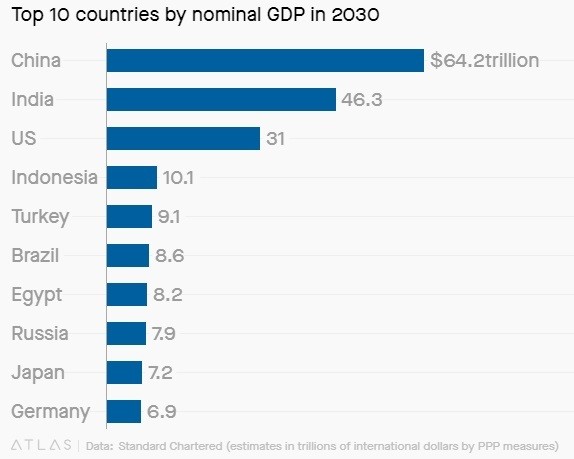
image source: weforum.org
Here are 8 reasons this prediction is likely to come true:
1. Growth acceleration
India’s trend growth is accelerating to 7.8% by the 2020s partly due to ongoing reforms, including the introduction of a national goods and services tax (GST) and the Indian Bankruptcy Code (IBC).

In comparison, China is expected to grow at 6.6% in 2018 and 6.2% in 2019.
2. The world’s largest group of young people
While in the rest of the world, the ageing population is growing, India has become home to the world’s largest group of young people: half of the country’s population is under the age of 25, that is 600 million people.

3. The highest concentration of the urban population by 2020
The UN expects the world’s urban population to increase from 55% to 68% by 2050. This increase is expected to be highly concentrated in just three countries: India, China and Nigeria. India’s contribution is the highest: 416 million urban dwellers by 2050. In 2018 the urban population of the world accounted for 4.2 billion people.

4. $1 trillion real-estate market size by 2030
India is the country where the largest urban transformation of the 21st century is happening.
Key contributors to this growth are the Indian real estate and infrastructure, a young demographic base, growing income levels, expanding middle-class and stable democracy.

5. The fastest-growing cities
Rapid urbanisation is one of the five megatrends identified by PwC to shape the world in 2019. According to PwC, cities are breeding grounds for wealth creation and economic growth.

Indian cities are leading the change. Here is how:
- 70% of future employment is expected to be generated in Indian cities;
- Emerging cities (population less than 1 million) are driving consumption expenditure;
- Significant opportunities for domestic and international investments.
According to research institute Oxford Economics, all the top 10 fastest-growing cities by GDP between 2019 and 2035 will be in India: Surat, Agra, Bengaluru, Hyderabad, Nagpur, Tiruppur, Rajkot, Tiruchirappalli, Chennai and Vijayawada.
6. The 3rd largest consumer economy by 2025
According to the Boston Consulting Group consumer report, India will become the world’s third largest consumer economy by 2025 with consumption set to triple to $4 trillion.

The factors driving this growth are as follows:
- The wealthy will represent 40% of all spending, the largest consumer segment;
- Emerging cities will constitute ⅓ rd. of total consumer spending;
- Nuclear families will make three-fourths of all Indian households;
- Retail sales will increase from 30% to 35% due to digital channels;
- Online will grow to 10% from 8% as a preferred medium of retail spending.
7. The World’s Leader in renewable energy
According to the World Economic Forum, India will soon be leading the world in renewable energy.
India is currently in the second spot after Chile in the 2018 Climatescope report by energy researcher BloombergNEF. But the country’s latest increased investments, clean energy installations as well as the world’s largest renewables auction market have slingshot India in top three from the 5th position it held in 2017.

8. The Innovation Mission and the Innovation Diplomacy
The Indian Government has set innovation at the core of the country’s growth policies.
The country is currently running its innovation programme, the Atal Innovation Mission which started in 2016. The programme was designed to reach its goals by implemented the following: scaling start-up incubation centres, promoting innovation culture among schoolchildren by providing them with hands-on experience in 3D printing, leveraging the Internet of Things and developing robotics. As a result, India moved up in the Global Innovation Index, from 81st place in 2015 to 57th place in 2018.

Innovation Diplomacy was defined by the Mori Government as the ongoing diplomatic efforts in forging strong economic ties with other nations, based on innovation.
The efforts of the Indian diplomats paid off: the India-Israel Innovation Fund was launched in August 2018; the fund encompasses an annual investment of $4 million from each country for five years, putting its total value at $40 million.
Join the Conversation
We’d love to hear what you have to say.
Get in touch with us on Facebook Group and Twitter.
Marketing research done right
Either you start a new business, launch a new project / product / service or you just want to stay ahead of your competition, a strong and smart marketing research will give you the necessary advantage over the competition. Moreover, in this ever-changing and moving market, with the technology changing it day by day and with consumers always up-to- date and in control of the situation, research becomes more and more important daily. Therefore, market research is a key component of any good product team management process, sales and marketing strategy, or business growth strategy.
“Marketing research can give a business a picture of what kinds of new products and services may bring a profit. For products and services already available, marketing research can tell companies whether they are meeting their customers’ needs and expectations. By researching the answers to specific questions, small-business owners can learn whether they need to change their package design or tweak their delivery methods–and even whether they should consider offering additional services,” writes entrepreneur.com.
Research deserves its important place in a business activity and should be treated accordingly. We are presenting you some of the steps you must take in order to make sure your research is done right.

source: AdWeek
- Primary research focuses on gathering data from analyzing current sales and the effectiveness of current practices. It also takes competitors’ plans into account, giving you information about your competition. The pieces of information will be received following: interviews (qualitative and quantitative), surveys, questionnaires (online or by mail), focus groups.
2. Secondary research. Analyzing the data that has already been published. and that can help you identify competitors, establish benchmarks and identify target segments. Your segments are the people who fall into your targeted demographic–people who live a certain lifestyle, exhibit particular behavioral patterns or fall into a predetermined age group.
3. Study the Economy: Just like the history is important in knowing and understanding who we are as a culture and what we will be in the future, showing what we can expect, so is knowing and understanding the economy helping your business grow. You can better understand reports about some of the most important big factors affecting the industry you’re in and the customers you hope will spend their money on your products or services.
Being up-to-date with the economics world will help you know how to adjust your business, prevent difficult situations and choose the right time to expand.
4. Read Business and Industry Publications: Whatever your industry, there’s likely a trade group or research firm out there compiling industry statistics and trends that are all insights into your business. Join your industry trade group or follow key industry thought their leaders on social media and media (their TV, print, online appearances). Being part of the industry and its insights will help you find out detailed industry statistics and trends that can help you better understand the past, present and future of companies like yours.
5. Look Elsewhere: Take example from successful local and international businesses. A similar business on the opposite end of the country may give you some great promotional ideas, or an international market could start complaining about rising commodity prices before they affect you directly.
6. Hire a smart internal researcher and a good research agency. Your researcher will be able to present you monthly reports regarding the market and your consumers, while the agency will be a key element when making an important move on the market. They will for sure make the difference.
More ideas and steps you can find here.

